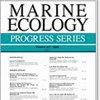鳀鱼的崛起:调查加那利洋流北部招募强度的环境驱动因素
IF 2.1
3区 环境科学与生态学
Q2 ECOLOGY
引用次数: 0
摘要
摘要:自 2010 年代中期以来,欧洲鳀鱼(Engraulis encrasicolus)在西伊比利亚海域的丰度和招募量显著增加,导致鳀鱼渔获量增加了 5 倍。影响伊比利亚西北大西洋海域(伊比利亚西北大西洋)鳀鱼繁殖变化的潜在环境驱动因素尚不清楚。利用 1999-2021 年的数据,我们确定了生物和物理因素的区域性变化,这些变化最有可能是造成鳀鱼产量持续增加的原因。在 4 月至 6 月的弱下沉事件(-500 至 0 m3 s-1 km-1)、较低盐度(<35)和温度介于 15 至 17 摄氏度(与每年的产卵高峰期相对应)期间,鳀鱼的繁殖最为旺盛。冬季北大西洋涛动(NAOW)也与凤尾鱼繁殖旺盛的年份有关。伊比利亚极向流和西伊比利亚浮力羽流等当地海洋特征很可能有助于提高鳀鱼幼体的岸上滞留率,促进生命周期的结束和提高存活率。自 2009 年以来,在产卵季节观察到的平均较低盐度水平支持了这一假设。此外,随机森林模型表明,凤尾鱼繁殖力相对较强的年份往往是欧洲沙丁鱼(Sardina pilchardus)丰度较低的年份,这表明觅食竞争和鱼卵捕食等鱼群内部过程在确定繁殖潜力方面也很重要。我们强调了未来需要研究的途径,以便从机制上了解该地区鳀鱼的繁殖驱动因素,从而为管理者提供可靠、科学的建议,并改进对气候变化潜在影响的预测。本文章由计算机程序翻译,如有差异,请以英文原文为准。
Anchovy on the rise: Investigating environmental drivers of recruitment strength in the northern Canary Current
ABSTRACT: Since the mid-2010s, the abundance and recruitment of the European anchovy Engraulis encrasicolus has significantly increased off Western Iberia, leading to a 5-fold increase in anchovy catches. The potential environmental drivers impacting recruitment variability in anchovy in Atlantic Northwestern Iberian waters (NW Iberia) are unknown. Using data spanning 1999-2021, we identified regional changes in biological and physical factors most likely responsible for the persistent increased productivity of anchovy. Anchovy recruitment was strongest during periods with weak downwelling events (-500 to 0 m3 s-1 km-1), lower salinity (<35), and temperature between 15 and 17°C from April through June, months corresponding with annual peak spawning. Positive Winter North Atlantic Oscillation (NAOW) was also associated with years with strong anchovy recruitment. It is likely that local oceanographic features such as the Iberian Poleward Current and the Western Iberia Buoyant Plume contribute to a higher onshore retention of anchovy larvae, promoting life cycle closure and higher survival. The average lower salinity levels observed during spawning seasons since 2009 support this hypothesis. Moreover, random forest models suggested that years with relatively strong anchovy recruitment tended to be those with low abundance of European sardine Sardina pilchardus, suggesting that intra-guild processes such as foraging competition and egg predation are also important in establishing recruitment potential. We highlight future avenues of research needed to gain a mechanistic understanding of recruitment drivers of anchovy in this region to provide robust, science-based advice to managers and improve projections of the potential impacts of climate change.
求助全文
通过发布文献求助,成功后即可免费获取论文全文。
去求助
来源期刊

Marine Ecology Progress Series
环境科学-海洋学
CiteScore
5.30
自引率
8.00%
发文量
238
审稿时长
3 months
期刊介绍:
The leading journal in its field, MEPS covers all aspects of marine ecology, fundamental and applied. Topics covered include microbiology, botany, zoology, ecosystem research, biological oceanography, ecological aspects of fisheries and aquaculture, pollution, environmental protection, conservation, and resource management.
 求助内容:
求助内容: 应助结果提醒方式:
应助结果提醒方式:


